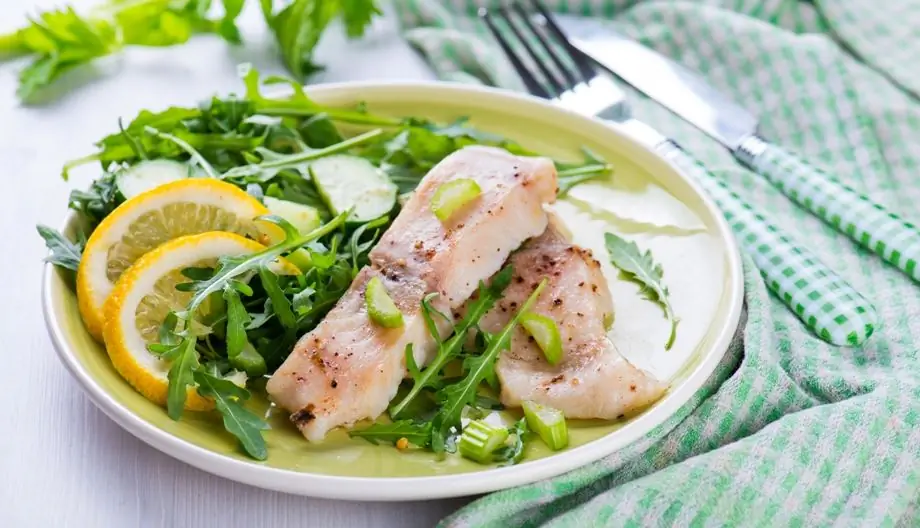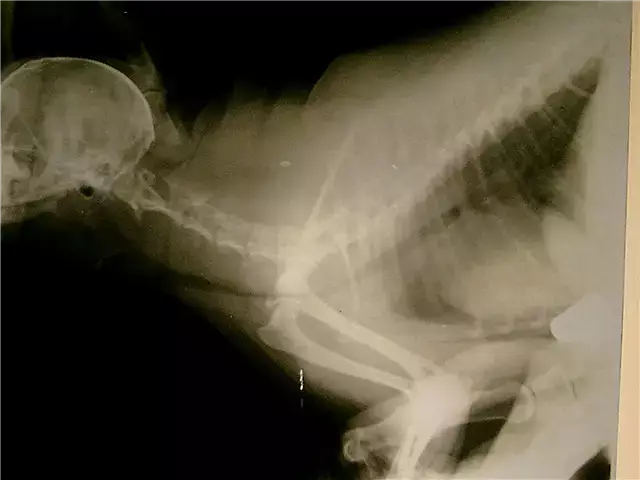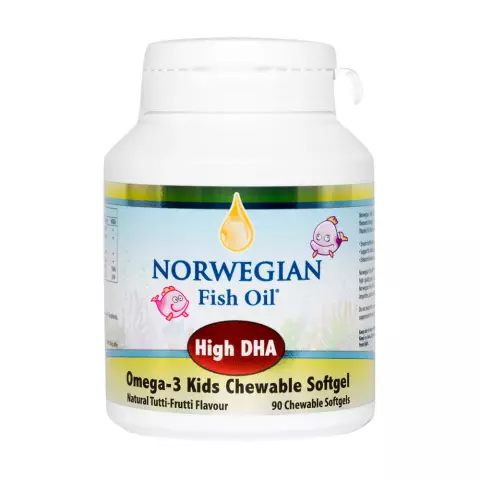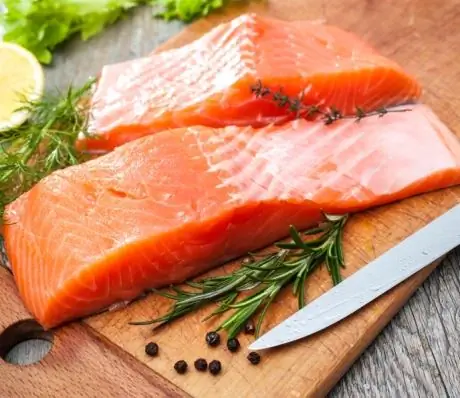- Author Rachel Wainwright [email protected].
- Public 2023-12-15 07:39.
- Last modified 2025-11-02 20:14.
Fish diet
Fish is one of the most useful foods recommended by doctors and nutritionists to maintain health and beauty. It contains vitamins of groups E, B, phosphorus, magnesium, calcium, zinc, iodine. Fish proteins are almost completely absorbed by the body. Fish fillet is an irreplaceable source of omega-3 polyunsaturated fatty acid, which has a beneficial effect on the cardiovascular system, brain activity, and is also necessary for the normalization of blood cholesterol levels. It should be noted that omega-3 is especially abundant in fatty fish of northern waters: salmon, herring, halibut, trout, tuna, salmon, mackerel.
Fish can be substituted or alternated with seafood. Seafood contains a slightly different set of nutrients, but this will not affect the effectiveness of the diet.
Fish diet rules:
- fractional meals - food four to five times a day in small portions;
- between meals, you need to drink clean non-carbonated water, gradually increasing its volume to 1.5-2 liters per day;
- fish is prepared in one of the dietary ways - boiling, baking, stewing, steaming, grilling.
There are several options for a fish diet, differing only in duration. Since this nutritional system is balanced, if necessary, you can stick to it for longer than the recommended seven days. If there are no health problems, the diet can be followed for several weeks.
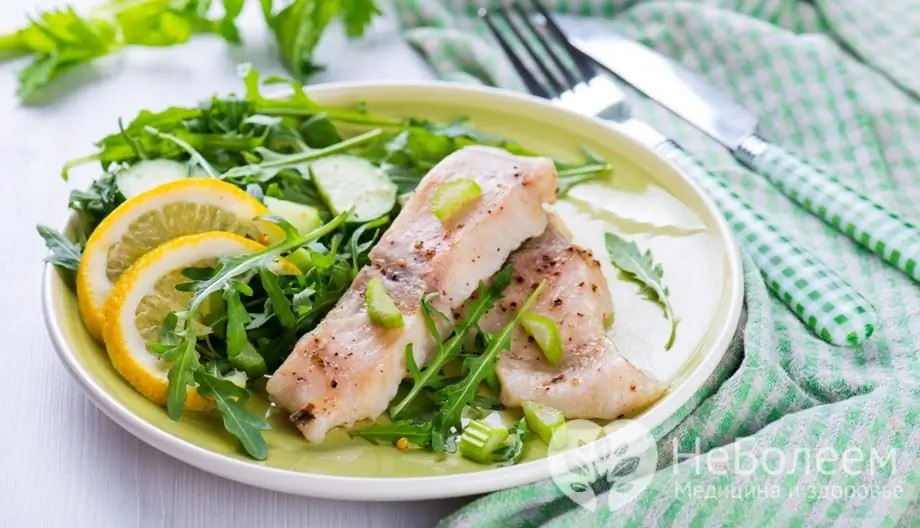
Advantages of a fish diet
For seven days of a fish diet, you can get rid of 3-4 kg of excess weight.
The fish is easy to digest and at the same time satiates well, the painful feeling of hunger with a fish diet is unlikely to appear. After the first days of adaptation, the diet is usually accompanied by good health, as it contributes to the health of the body.
Disadvantages and contraindications of the fish diet
The fish diet is not suitable for those who are allergic to fish and seafood or simply do not like them.
Such a diet is contraindicated for people suffering from chronic diseases of the kidneys and liver, stomach ulcers or duodenal ulcers.
What foods are allowed?
- fresh fish.
- seafood.
- non-starchy vegetables (bell peppers, all types of cabbage, cucumbers, tomatoes, green beans, eggplants, leafy greens, etc.).
- fruit.
- eggs.
- dairy products.
- vegetable oil for salad dressing.
- green tea, black coffee, still mineral water, herbal decoctions and infusions, and occasionally a glass of natural dry wine.
Salt is allowed in small amounts, it needs to be reduced every day.
What foods are prohibited?
All products not on the approved list are prohibited.
Sugar, salt and hot spices should be avoided primarily.
Fish diet menu
Sample menu of the fish diet for the day:
Useful Tips
Advice 1. It is recommended to drink a glass of heated water 10-15 minutes before each meal.
Advice 2. The diet will be more effective if it is accompanied by physical exercise. Ideal during this period are yoga, Pilates, swimming, water aerobics.
| Diet characteristic | final grade |
| Duration: 7 days |
4 out of 5 A fish diet involves an increased intake of protein in its most digestible form when combined with non-starchy vegetables. Thus, this is one of the best options for a protein diet. |
| Recommended frequency: every 2 months | |
| Weight loss rate: | |
| Safety: | |
| Variety of products: |
YouTube video related to the article:
Found a mistake in the text? Select it and press Ctrl + Enter.

